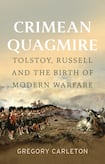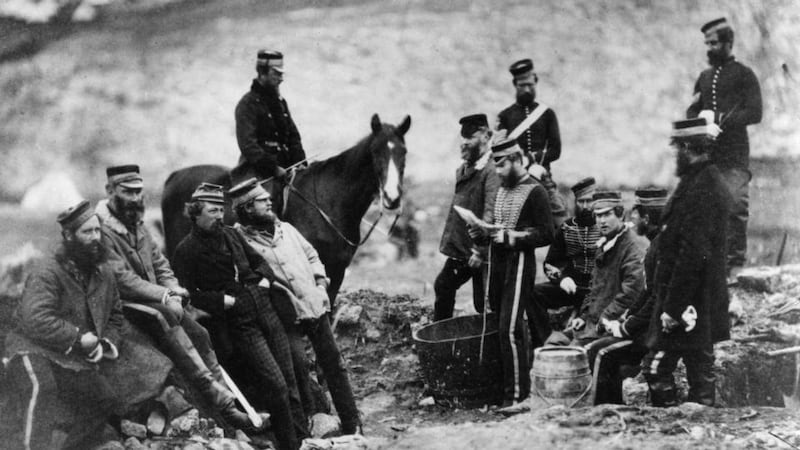
Ever since its annexation by Russia in 2014, the Crimean Peninsula in the Black Sea has featured prominently in news coverage of the ongoing war in Ukraine. Yet because of its strategic location, Crimea has been the site of armed conflict before, most notably in the middle of the 19th century when some of the big European empires clashed violently on the shores of the peninsula from 1854-1856. The Crimean War, waged between Britain and her allies on one side and Russia on the other, was the only big armed conflict fought in Europe between the Napoleonic Wars and the first World War. The sheer number of participants – with Britain joined by the French, the Ottomans and, eventually, the Sardinians against the Russians – made it a global affair and perhaps the greatest international crisis of the Victorian era.
The war was sparked by Russian demands to exercise protection over the Orthodox subjects of the Ottoman sultan, reflecting an ongoing dispute over the privileges of the Russian Orthodox church in the holy places of Palestine. More generally, it was caused by the growing Russian influence in European and Middle Eastern affairs at the expense of the Ottoman Empire. For Britain, preventing Russian hegemony in the region was crucial to maintaining a balance of power. Although the war ended without the map of Europe being significantly changed, Crimea is widely considered the first “modern” war, as it saw the deployment and use of long-range artillery, landmines, and steam-powered ships.
The Crimean War, most recently analysed in Orlando Figis’s magisterial The Last Crusade (2010), is the backdrop for a fine new book by Gregory Carleton, a professor of Russian studies at Tufts University. Carleton is primarily interested in the ways in which the war was portrayed and communicated to the home fronts by two prominent eyewitness participants from opposite sides of the trenches. One was the Irish journalist William Howard Russell, arguably the world’s first professional war correspondent, who reported from Crimea for the Times; the other, Lev Tolstoy, a young artillery officer whose subsequent literary masterpieces, War and Peace (1869) and Anna Karenina (1878), established him as one of the greatest novelists of the 19th century.

The idea to compare and contrast the observations and war correspondence of these two men is an interesting one, not least because they could not have been more different. Russell was a civilian reporter from Tallaght, who lived with ordinary soldiers in Crimea and publicly criticised the British military leadership and government for their mismanagement of the conflict. Tolstoy was an aristocratic officer, who wrote about the horrors he observed from a privileged perspective, but without the freedoms that Russell enjoyed. For all its faults, the Britain of Russell’s day had no censorship, a democratically elected government, and an increasingly literate society, whereas Tolstoy’s Russia was a censored, despotic autocracy with a backward, largely agrarian economy held up by the chains of serfdom and a society with low literacy rates.
Yet some interesting commonalities emerge between the two men. Most importantly, the realities they documented broke with a centuries-old tradition derived from Homeric models that had made the battlefield an exalted place of glory, courage and worthy sacrifice. Russell and Tolstoy offer instead graphic scenes of appalling slaughter centring on the siege of Sevastopol, the Crimean port city that for 11 months was witness to the war’s most brutal fighting.
Stripping away the romanticism of the Napoleonic era, Tolstoy and Russell’s accounts exposed government lies and cover-ups, as their nations descended into the first, but by no means last, significant quagmire of the modern age. Their writing shocked readers, revealing the horrific circumstances of modern war and revealed how much of this tragedy was due to human agency. When the British government tried to cover up and deny this, Lord Aberdeen resigned as prime minister while the siege of Sevastopol was still ongoing.
Tolstoy’s impact was different. Describing Tolstoy as a war correspondent might be a bit of a stretch for he lived in a country that did not know freedom of press. When Tolstoy tried to create a soldiers’ gazette, the tsar refused. Despite high levels of censorship, Tolstoy did manage to publish his collection of short-stories, the Sevastopol Sketches, in 1855 while the war was still ongoing, criticising the senselessness and vanity of war and describing its horrors in unusually frank ways. By war’s end, his disgust with the conduct and lies of his government led him to resign his commission and devote himself to a life of writing.
For all their differences, both men became drivers of a revolution in war writing as they tried to understand and convey what happened in the trenches of Sevastopol. Carleton’s new book successfully evokes this revolution in how wars were portrayed and how governments (particularly in democratic countries) became more accountable as a result of that process.
Prof Robert Gerwarth is director of UCD Centre for War Studies














